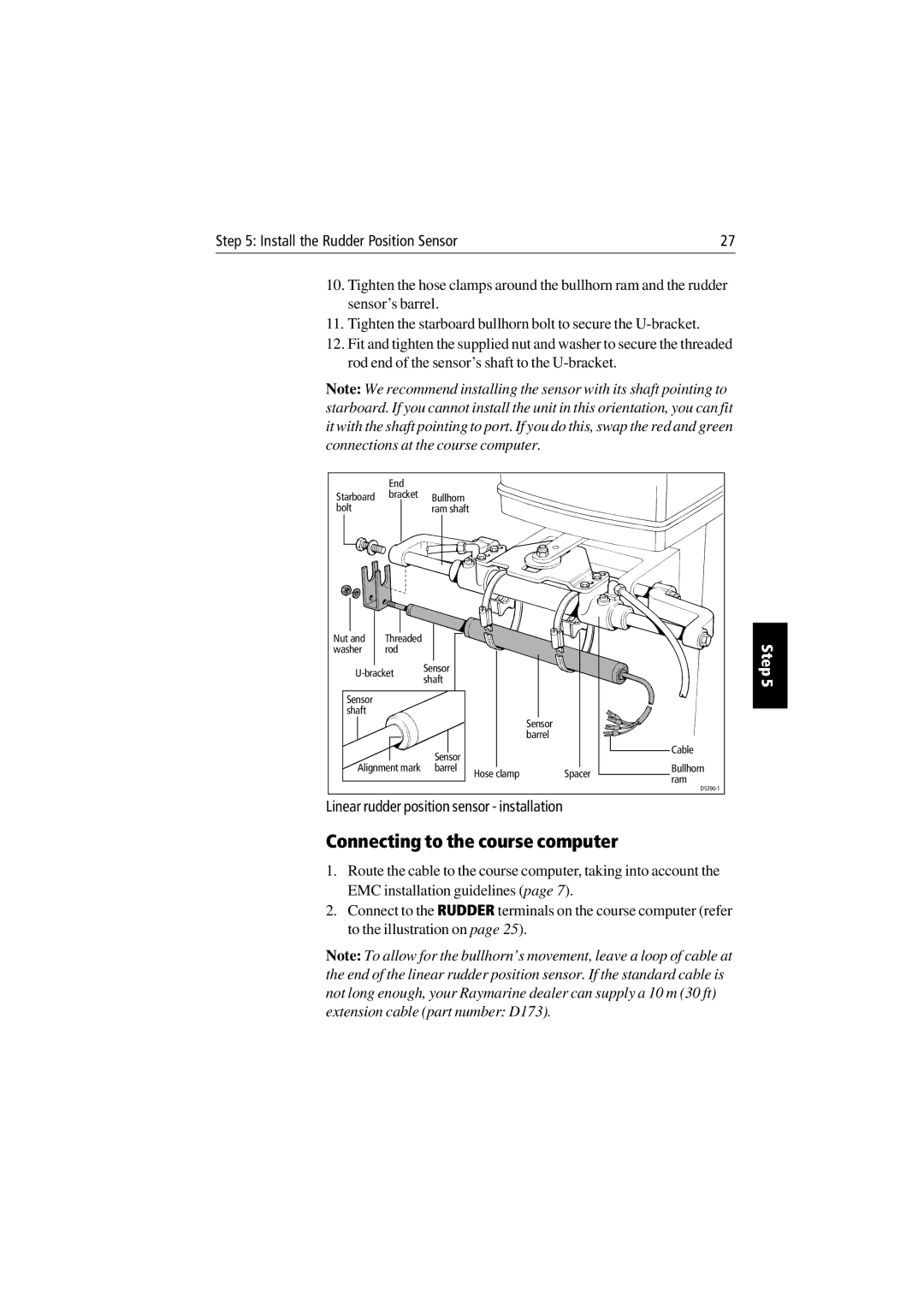
Step 5: Install the Rudder Position Sensor | 27 |
10.Tighten the hose clamps around the bullhorn ram and the rudder sensor’s barrel.
11.Tighten the starboard bullhorn bolt to secure the
12.Fit and tighten the supplied nut and washer to secure the threaded rod end of the sensor’s shaft to the
Note: We recommend installing the sensor with its shaft pointing to starboard. If you cannot install the unit in this orientation, you can fit it with the shaft pointing to port. If you do this, swap the red and green connections at the course computer.
| End |
|
|
|
|
Starboard | bracket | Bullhorn |
|
|
|
bolt |
| ram shaft |
|
|
|
Nut and | Threaded |
|
|
| Step |
washer | rod |
|
|
| |
Sensor |
|
| |||
|
| shaft |
|
| 5 |
Sensor |
|
|
|
|
|
shaft |
|
|
|
|
|
|
|
|
| Sensor |
|
|
|
|
| barrel |
|
|
| Sensor |
|
| Cable |
Alignment mark |
|
|
| ||
barrel | Hose clamp | Spacer | Bullhorn | ||
|
|
| ram | ||
|
|
|
|
| |
|
|
|
|
| |
Linear rudder position sensor - installation
Connecting to the course computer
1.Route the cable to the course computer, taking into account the EMC installation guidelines (page 7).
2.Connect to the RUDDER terminals on the course computer (refer to the illustration on page 25).
Note: To allow for the bullhorn’s movement, leave a loop of cable at the end of the linear rudder position sensor. If the standard cable is not long enough, your Raymarine dealer can supply a 10 m (30 ft) extension cable (part number: D173).
